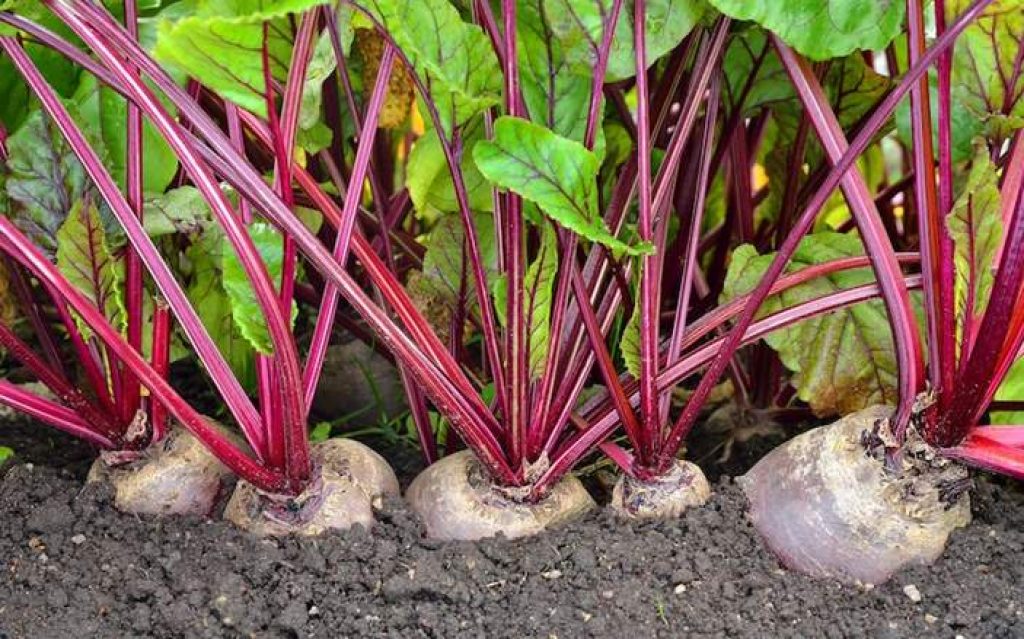Beetroot (table, garden, dinner, red, or golden beet) is an edible taproot of the beet plant (Beta vulgaris) variety whose edible tops are known as beet leaves or greens.
The specific cultivar belongs to the B. vulgaris subsp. vulgaris ‘Conditiva’ Group in the family Amaranthaceae (the amaranth family) while sugar beet belongs to a different cultivar group.
Common cultivars include Action, Albino (with root), Alto, Red Ace, Touchstone Gold (yellow root), Golden Beet (yellow root), Perfected Detroit, Ruby Queen, Solo, and Forono. Others are Cylindra (has elongated root). Others are Early Wonder (heirloom), Pablo, MacGregor’s Favorite (carrot-shaped), among others.
Besides being eaten as food, it has an application in food coloring and as well as medicinal value. Let us assess the safety and suitability of beetroot and beet greens or leaves to rabbits. Is it good or bad?

Beetroot
Rabbits can eat beetroot in moderation as an occasional treat. The white, yellow, or red varieties or cultivars are all safe. Give them about two slices or a teaspoon per two pounds of their body weight. These pets will like the crunchy texture and taste.
Nutritionally, it is a good source of manganese and folate with small amounts of vitamin B6, magnesium, potassium, phosphorus, iron, and sodium. Also, it has betanin (gives the red color), inorganic nitrate, and vulgaxanthin (yellow or orange varieties), which have various vital health benefits.
In humans, it may help lower blood pressure, improve digestion, support the brain, fight cancer, and increase tolerance to exercise, among other health benefits.
However, beetroot is high in oxalic acid whose effects include interfering with gastrointestinal absorption of some minerals, increasing the chances of formation of calcium oxalate stones in the kidney and bladder, and prolonged use will result in acute kidney damage.
Also, it is high in sugars. Therefore, an excess amount may affect the normal gut microflora leading to enteritis, diarrhea, gas, and bloating. Besides GI issues, too much may cause obesity.
The other reason why bunnies cannot eat a lot of beetroots is the low fiber. Fiber helps in keeping things moving in their GI and promotes a healthy gut.
While not a big issue, expect urine color change, especially if you give your bunny the red or dark red colored one since it has betanin.
Beet greens or leaves
Rabbits can also eat beetroot leaves or greens, including stalks, sparingly as an occasional part of their leafy greens, like once a week. They should be one of the about vegetable mix you give your bunny.
The greens or leaves are rich in vitamins A, C, and K. They also have riboflavin, vitamin E, calcium, iron, magnesium, potassium, manganese, copper, sodium, thiamin, and riboflavin.
However, like beetroot, they also have oxalates. Their oxalate levels are even higher when compared to roots.
Also, beetroot leaves are high in calcium, standing at 117mg per 100g. High calcium diets may cause urinary calcium stones and urinary calcium sludge that may cause bladder inflammation.
Therefore, when feeding beet greens to your bunnies, observe these rules:
- Don’t include any other high oxalate vegetables like Swiss chard, radish tops, spinach, mustard greens, and so on.
- Ensure there are no other veggies in the mix like carrot tops, collard greens, dandelions, turnip tops, spring greens, among others.
Introduce it well
If you tried new food and noticed diarrhea, gas, bloating, and other stomach upsets, it is because you didn’t introduce it well, or you have them too much.
It would be best if you introduced beetroot or beet greens gradually, starting with a minimal amount. The slow introduction gives a rabbit’s tummy a chance to adapt to the new food and minimize the chances of diarrhea.
Also, since they are not as high in fiber as hay, an excessive amount may cause diarrhea or soft stool, gas, bloating, and so on. Keep within the required amounts we will look at next.
Finally, get an organic source, avoid molded as they may be harmful to your furry friend.
Correct portions
Rabbits need unlimited hay (about 80%), 10-15% greens and vegetables, 5% and 0-5% treats. Some vegetables like non-leafy vegetables, herbs, flowers, and fruits may be part of treats.
Therefore, ensure all the vegetables that these pets have are between 10-15% and not more. Also, keep varying to bring in different nutritional benefits, taste, and texture. Providing a variety will keep your bunny interested!
